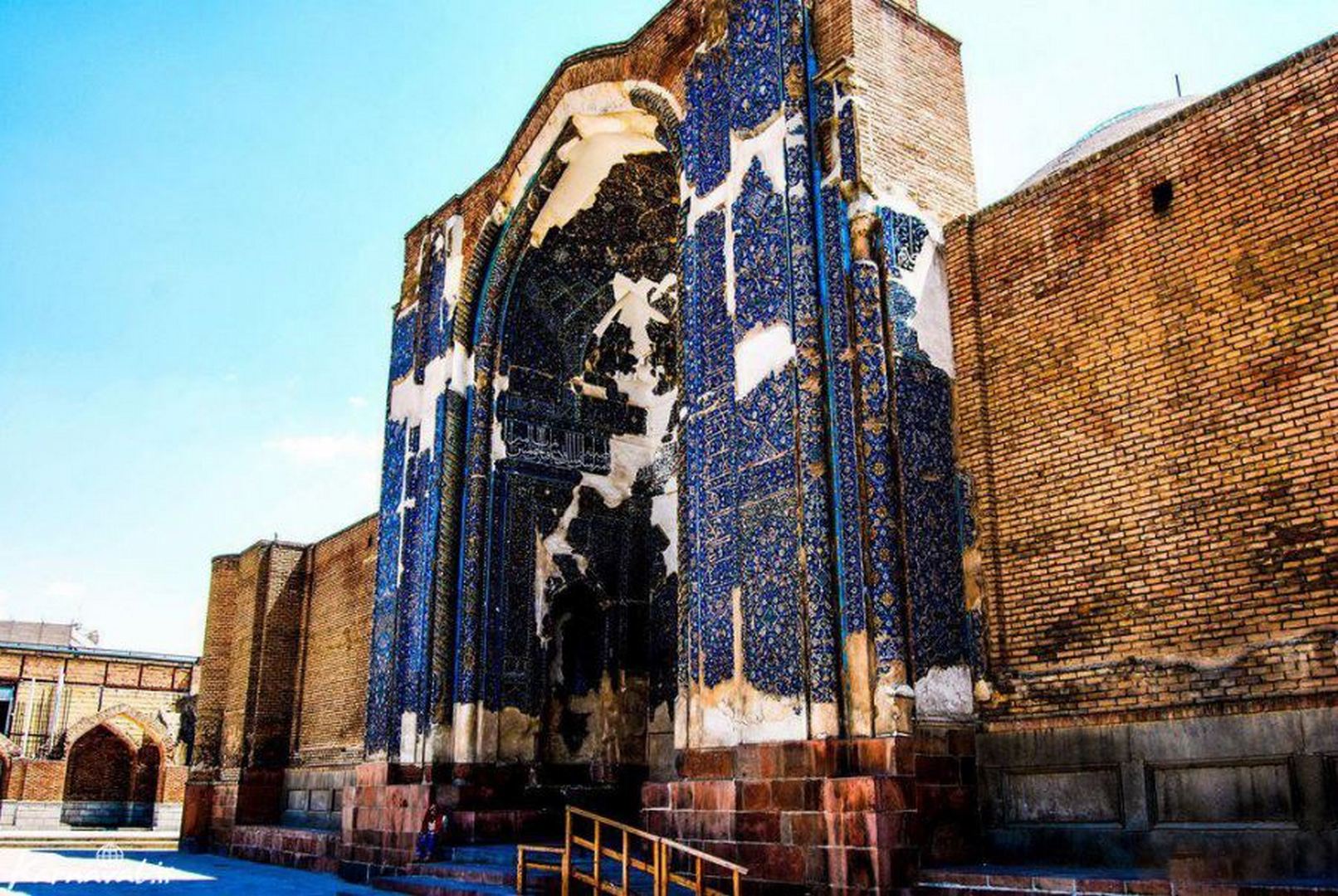Description
Property Name: Blue Mosque, Masjed-i Kabul
Inventory No: 98-411-1
Date of infill of the inventory form: 2009-12-07
Country (State party): Iran
Province: Tabriz
Town:
Geographic coordinates: 38° 4′ 25.53″ N
46° 18′ 3.64″ E
Historic Period: 15th century, 2nd half
Year of Construction: 1465
Style: Timurid
Original Use: Mosque, Mausoleum
Current Use: Museum
Architect: Unknown
Significance
The mosque is one of the few completely covered mosques of Persia which was built in Timurid period. Beautiful and delicate mosaic faiences have been laid on the interior and exterior of the mosque. It is due to these turquoise tiles that the mosque is also called Turquoise of Islam or Blue Mosque. The main prayer hall (Shabestan) under the largest double layered cupola is connected with a vaulted entrance corridor, because the building is located in a cold climate. On both sides along the corridor, there stand the remains of the chambers with vaulted roofs. The walls of the mosque are covered with marble slabs.
Selection Criteria
i. to represent a masterpiece of human creative genius
ii. to exhibit an important interchange of human values, over a span of time or within a cultural area of the world, on developments in architecture or technology, monumental arts, town-planning or landscape design
iii. to bear a unique or at least exceptional testimony to a cultural tradition or to a civilization which is living or which has disappeared
iv. to be an outstanding example of a type of building, architectural or technological ensemble or landscape which illustrates (a) significant stage(s) in human history
State of Preservation
In 1779, an earthquake destroyed the original complex including school, public bath and library. The mosque was also badly destroyed. The roof of the mausoleum and the main dome chamber of the mosque burst and collapsed during the earthquake and just the entrance part is left. Then in 1973, it was reconstructed by Reza Memaran Benam (architect from Tabriz) under the supervision of the National Organization for Preservation of Ancient Monuments.
Still under slow restoration after being damaged by an earthquake.(in September 2017).
References
Dibadj, I., Athar-i Bastani wa Abniya-i Tarikh-i Azarbaydjan (Historical Buildings and Heritages of Azerbaijan), Tahran: Shura-yi Markazi Djashan Shahinsha, Iran, 1966.
Kiyani, M.Y., Memari wa Shahrsazi Iran: Be Riwayat Taswir (Iranian Architecture and Town planning: A Pictorial Record), Hawza-i Hunari Sazman-i Tablighat-i Islami-i Iran, Tahran, 1993.
Kiyani, M.Y., Memari-i Iran dar doreh Islami (Iranian architecture in Islamic period), Iran, Samt, 2000.
Soltanzade, H., Tabriz A Solid Cornerstone of Iranian Architecture, Cultural Research Bureau Tehran, 1997.
Pirniya, M. K., Mimariyan, G. H., Sabkshinasi-i Mimari-i Irani (Stylistics of Persian Architecture) Pajuhandeh, Tehran, 2004.
Pope, Arthur Upham, Persian Architecture, Soroush Press, Tehran, 1976.
Purhussein Khuniq, I., Tabriz be Riwayat Taswir (Tabriz Pictorial Introduction), Tahran, Danial, 2001.
Wilber, Donald N., The Architecture of Islamic Iran: The Ilkhanid Period, New Jersey: Princeton University Press, 1955.
Archnet Website: http://www.archnet.org


